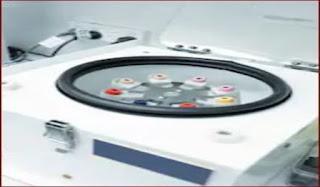Blood Cross Matching
The purpose of the compatibility (cross-match) test is to ensure serological compatibility between the recipient‘s serum and the donor‘s red cells. This includes ABO compatibility and the detection of red cell alloantibodies in the patient‘s serum. In many transfusion centers, the cross-match procedure has been replaced with type and screen‘ policy, according to which both the donor and the recipient are typed for ABO & Rh D‘ groups and screened for atypical antibodies. The blood is then released, either by performing an Immediate Spin or a Computer Cross-Match. However, in centers in which antibody screening is not done, the following tests should be included as part of the compatibility testing:
1. ABO & Rh ‗D‘ grouping of the donor‘s unit.
2. ABO & Rh ‗D‘ grouping of the patient/ recipient.
 4. The cross-match should include testing at room temperature, LISS phase at 37oC, and the Indirect Anti-globulin Test at 37oC.
4. The cross-match should include testing at room temperature, LISS phase at 37oC, and the Indirect Anti-globulin Test at 37oC.
2. ABO & Rh ‗D‘ grouping of the patient/ recipient.
3. An Indirect Anti-globulin Test (IAT) using the patient‘s serum and the donor‘s red cells. The incubation time can be reduced to 10 minutes if LISS is used as the potentiating agent.
 4. The cross-match should include testing at room temperature, LISS phase at 37oC, and the Indirect Anti-globulin Test at 37oC.
4. The cross-match should include testing at room temperature, LISS phase at 37oC, and the Indirect Anti-globulin Test at 37oC.
5. Release of the blood after securing the name of the recipient on the Donor Blood Bag and filling out the appropriate Issue Form.
Rh D ANTIBODY TITRATION
Antibody titration is a semi-quantitative means of assessing the amount of antibody in the serum. This is usually done in Rh-incompatible mothers with a view to inducing labor if the titer progressively rises. It should be done after detection of the antibody by IAT and identification by the cell panels.


